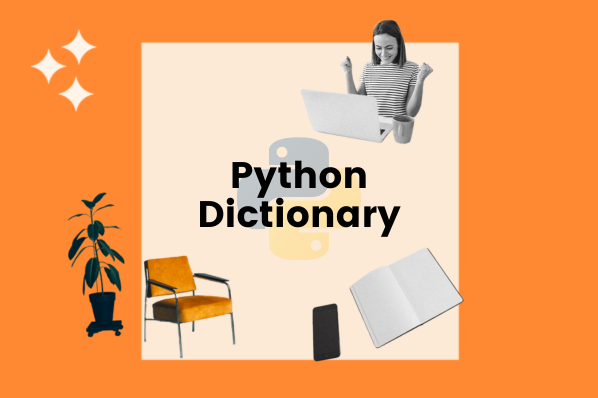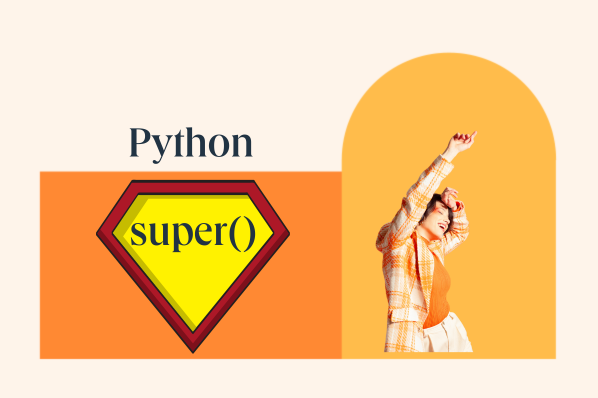Python has earned its reputation as one of the most versatile coding languages, primarily due to its intuitive, English-like syntax and adaptability. One of its standout features is its data handling proficiency, making it an ideal choice for powering machine learning and AI models.
If you’ve engaged with popular AI platforms like ChatGPT and Bard, you’ve experienced firsthand the power of Python-driven data models.
Download Now: An Introduction to Python [Free Guide]
But ChatGPT and Bard aren’t the only applications worthy of Python. Python has a large community with many libraries to support devs like you on your next project. In this article, we will go over the best AI libraries in Python, their benefits, and the AI libraries you can use today.
Table of Contents

An Introduction to Python
A guide for marketers, developers, and data analysts. You'll learn about...
- What Python is.
- Programming Best Practices.
- Coding Standards.
- And More!
Download Free
All fields are required.

What are Python AI libraries?
To save time in programming, a library is a collection of pre-compiled routines and functions that can be reused in multiple applications. Python developers comprise a large community with a huge catalog of open-source libraries.
Specifically, Python AI libraries are a collection of modules and tools programmed using the Python language. The libraries are designed to advance and implement AI and machine learning tasks. The libraries consist of pre-defined functions, classes, and methods that allow programmers to develop, train, and deploy AI models without crafting routines from scratch.
Python AI libraries are great tools for AI and ML models and beneficial for many other fields like deep learning and natural language processing. Let’s look at what makes the best Python AI libraries so great!
The Benefits of Python AI Libraries
1. Open-Source and Free
If you’re looking for a free programming language, Python is exactly what you need. Python is a free open-source programming language that can be used for personal, educational, and commercial use with a license.
“Open-source” refers to the fact that the language’s source code can be downloaded and used by the public for free. Most of its libraries can be used at no cost as well. You can download Python from its website at python.org.
2. Versatile
Whether you’re interested in data analysis, web development, game development, AI, or scientific computing, you can use Python. Python is also platform-independent, which means you can run it on various operating systems like MacOS, Windows, and Linux.
3. Large Support Community
No matter whether you’re a beginner or an expert, Python’s syntax simplicity makes it easier to learn than other programming languages such as C++, Ruby, or Java.
Additionally, Python is updated frequently to handle errors and bugs that may arise, has tons of resources and documentation on the web, and experts ready to help on forums like Reddit or Stackoverflow if you ever run into trouble.
4. Highly Compatible
Python can be integrated with many other programming languages, systems, and platforms. For example, if you have an application that is written primarily in C, you can use a library like ctypes to complete tasks like calling functions using Python.
You can also take advantage of scripting with Python, even if your application uses another programming language like Java or C++.
The Best Python AI Libraries
1. TensorFlow

TensorFlow is a free, open-source Python library developed by Google. No matter your skill level, this library enables users to construct deep learning and machine learning models. This is due to its ability to perform numerical computations at a high level.
Its flexible architecture and framework make it a popular choice in the machine-learning community. It has other features like diverse platform support, immediate iterations, and data pipeline creation.
Coca-Cola used TensorFlow to fuel its mobile proof of purchase model, which helped the company save millions of dollars by eliminating production line printers.
Best for: Any skill level looking to build deep learning models or neural networks and want to visualize their results.
2. NumPy

NumPy is a numerical library great for tasks that depend on scientific computations. This library is boasted as the best Python library because it provides support for large, multi-dimensional arrays and matrices, and is equipped with mathematical functions to operate on the arrays.
Its intelligent features include functions such as complex indexing operations, seamless integration with programming languages like C++, and memory efficiency.
Best for: Data scientist looking for a fast and user-friendly tool to conduct data analysis.
3.Keras

Keras is a high-level API used for neural networks. It’s best for experimenting with neural networks for machine learning models. The best part of Keras is that it can be integrated with other popular Python libraries like TensorFlow, Pytorch, and Theano.
Best for: Developers who are looking to experiment and bring their ideas to life fast.
4. SciPy

SciPy is a free, open-source library built on top of NumPy. It is best known for its ability to perform scientific and technical computing on large sets of data. This library is most loved for its inclusion of all of NumPy’s functions packaged in a user-friendly tool. It goes a step beyond NumPy by offering statistical functions and distributions.
Best for: Students or professionals looking to conduct research using a reliable tool.
5. Seaborn

Seaborn is an open-source Python library built on top of Matplotlib. It is used in many machine learning projects due to its ability to generate plots of learning data. Data visualization is fun and aesthetically pleasing, thanks to Seaborn’s advanced interface.
Users who are fond of Pandas dataframes can have the best of both worlds using Seaborn. This is because Seaborn is easily integrated with Pandas, allowing users to take advantage of both libraries’ capabilities.
Best for: Beginners or professionals in search of a tool with modern UI packed with the power to generate complex plots.
6. Scikit-learn

Often used with SciPY tools, Scikit is a favorite Python library that supports machine learning based on classical algorithms. Its prediction modeling abilities are a great selling point among beginners and professionals alike looking to use the tool.
Best for: Models that are being trained to detect spam or recognize images.
7. Plotly

Plotly is a premier open-source visualization tool widely celebrated among developers due to its engaging and ready-to-present graphics. From intricate heatmaps to illustrative bubble charts and concise boxplots, Plotly’s functionality is highly respected in the Python community.
Plotly’s technical makeup includes the foundations of D3.js, HTML, and CSS for visualization. It’s intertwined with the Django framework, facilitating the crafting of dynamic charts. Its compatibility with a variety of data analytics platforms ensures a hassle-free data import process, paving the way for stunning visual narratives.
Beyond just charts, Plotly also empowers users to design interactive dashboards and compelling slide presentations.
Best for: Developers and data analysts looking for an interactive and customizable tool to present their information.
8. Matplotlib

Matplotlib is a Python plotting library, renowned for its ability to generate static, animated, and interactive visualizations. It acts as the foundation for many advanced data visualization libraries in Python.
With a vast array of plots under its belt — from line and bar charts to intricate 3D plots — it ensures users have the tools for any graphical representation. Moreover, its deep integration with Pandas and supportive relationship with Jupyter notebooks facilitate a seamless plotting experience right from data structures and interactive sessions.
What sets Matplotlib apart is its unparalleled flexibility, enabling complete customization of plots to the user’s project. Its longevity in the Python community translates to reliability, useful resources, and a large supportive community.
Best for: Newbies or professionals looking to create sophisticated plots with a visual component.
9. PyTorch

PyTorch is a dynamic deep learning framework developed by Facebook’s AI Research lab. It’s favored for academic research, prototyping, and specific production use cases.
With its core built around tensors, PyTorch facilitates building complex neural network architectures and supporting CPU and GPU computation. Its defining trait is the dynamic computational graph, enabling flexibility in model design and real-time changes.
Best for: Developers looking for a flexible and intuitive platform for deep learning models.
10. Theano

Theano is a Python library created for deep learning, allowing developers to define, optimize, and evaluate mathematical operations, particularly those involving multi-dimensional arrays. Its architecture is tailored for high-efficiency numerical tasks, which is necessary when building demanding computational neural networks.
Initially developed by the Montreal Institute for Learning Algorithms (MILA) at the University of Montreal, Theano has significantly promoted the deep learning wave.
Theano boasts GPU acceleration, ensuring intensive mathematical computations are quickly exited for faster performance. Its unique selling point, an optimizing compiler, turns structures into more efficient intermediate representations, further pushing computational limits.
Best for: Developers who want to create custom neural network art architectures.
Which AI library will you check out?
In our exploration of Python programming, we’ve closely examined the top 10 AI libraries, each showcasing its strengths and specialties. From the tried-and-true nature of Matplotlib to the innovative prowess of PyTorch, this overview highlights the wide variety of tools that Python brings to the table for today’s developers.
As you dive into AI projects, remember that Python’s toolkit is diverse, influential, and ready to support your endeavors every step of the way. Start building with a Python AI library today!

An Introduction to Python
A guide for marketers, developers, and data analysts. You'll learn about...
- What Python is.
- Programming Best Practices.
- Coding Standards.
- And More!
Download Free
All fields are required.



![What Is Python? [+ How to Learn and Use It]](https://www.hubspot.com/hubfs/what-is-python_1.webp)

![Decorators in Python Explained [+Examples]](https://www.hubspot.com/hubfs/python-decorators.png)





